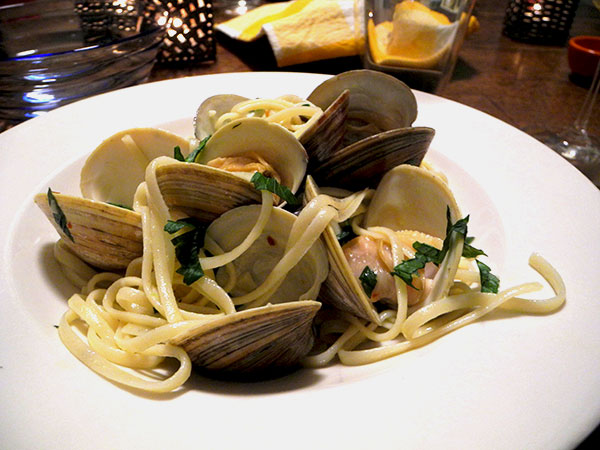Since I had forgotten ahead of time to provide for a fish or meat entrée on a day when there was no Union Square Greenmarket and when I really wanted to serve some of the vegetables I had on hand, early this evening I headed down to Dickson’s Farmstand Meats in Chelsea Market and went home with two small (5-6 ounce) Tri-tip steaks. They were surprisingly, and very enticingly well-marbled, which I thought was especially unusual for this cut. Before I learned on line that Tri-tips actually were somewhat similar to Culotte steaks, I had already decided to treat them more or less as I had prepared those tasty cuts in the past, searing the steaks on both sides, then finishing the beef in a quick oven for only a few minutes. The result was superb: The meat was cooked exactly as it should have been (partly from experience, partly from luck), and the taste was phenomenal, and we were treated to both at a very reasonable price per pound.
- Tri-tip steaks from Dickson’s Farmstand Meats, dried well, seared in a low-rimmed enameled cast iron pan, placed in a 425º oven for about seven minutes, removed, allowed to sit for a few minutes in the pan while being dressed with chopped shallots from Phillips Farm, a bit of lemon juice and olive oil, and a sprinkling of chopped parsley, also from Phillips Farm
- very small yellow pear tomatoes from Central Valley Farm, halved, tossed briefly into the pan in which the steal had been cooked, finished with chopped thyme from Stokes Farm
- spring onions [yep] from Berried Treasures, halved, rolled in olive oil, salt, and pepper, pan-grilled, finished with white balsamic vinegar, and a sprinkling of chopped lovage from Two Guys from Woodbridge
- red chard leaves from Norwich Meadows Farm, sautéed in olive oil, covered for a few minutes, uncovered while the liquid was boiled down most of the way, seasoned with part of a crushed dried chile pepper, salt and black pepper, lemon juice, and a drizzle of oil
- the wine was an Argentinian red, Altos Las Hormigas Mendoza Malbec-Clasico 2013









